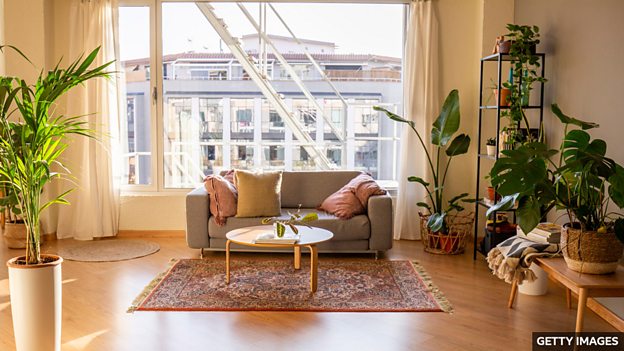说到室内设计,你是更注重舒适感还是外观?不论是家具装饰的摆放位置、装修材料的色彩和纹理,还是灯光的选配,都会影响居住者的心情。本期节目介绍舒适的家居环境对身心健康的好处。
词汇:interior design 室内设计
Our environments can affect the way we feel. This is not a new concept – after all, the traditional practice of feng shui has been with us for thousands of years. More recently, scientific research concluded that the design of healthcare environments could support patients in their recovery. Increasingly, however, it is our homes that are being seen as places we can improve our wellness.
A new approach to interior design suggests that many of us now care less about how our homes look and more about how they make us feel. How we feel can be influenced by a number of different things, including the furniture and objects within our homes and how these are arranged. For example, 'to create cosiness and the ability to connect with others, we want our furniture facing each other', says Lindsay T Graham, a personality and social psychologist. Smaller objects, too, have a lot of power, according to Monica Khemsurov, one of the founders of online design magazine Sight Unseen. Whether it's something an old friend made for us or a souvenir purchased while travelling, objects allow us to relive moments or feel closer to people we love at a glance. It makes sense, therefore, that taking a more intentional approach to where we place objects in our home, can affect our mood.
Other elements that help create a personal space that makes you feel good include the type of lighting, the use of colour and texture, as well as bringing nature into the home. Plants and 'natural materials, particularly unpainted wood, are really great for keeping our stress levels in check', says environmental psychologist Sally Augustin. And controlling stress levels can also be helped by making sure our work space and any clutter are hidden from sight when we want to feel calm, for example, during our night-time routine before going to bed.
However we choose to adjust our living spaces to improve wellness, the final tip from the experts is to not treat our homes as a museum. Instead, we should see them as idiosyncratic and constantly changing – just like us.
词汇表
concept 概念
healthcare environment 医疗环境
wellness 身心健康
approach (思考问题的)方式,方法
furniture 家具
object 物体,实物
arrange 布置,摆放
cosiness 舒适,惬意
connect with others 与他人产生联系
face each other 面对面
souvenir 纪念品
relive 重温,回味
at a glance 看一眼就…,立刻
intentional approach 有意的方式
place (v) 放置
mood 心情,情绪
a personal space 私人空间
lighting 灯光,照明
texture 纹理
keep (something) in check 控制
clutter (n) 杂物
hide from sight 遮住,藏在视线外
living space 生活空间
idiosyncratic 独特的,与众不同的
测验与练习
1. 阅读课文并回答问题。
1. True or False? A new approach to interior design focuses more on how homes look.
2. How can furniture help us connect with others?
3. How can objects in our home change our mood?
4. What can help us feel calm during our night-time routine?
5. True or False? Once we have created a feel-good home, we should never change it.
2. 选择意思恰当的单词或词组来完成下列句子。
1. Yoga is good for both mind and body. It promotes general _______.
concept healthcare environment recovery wellness
2. These flowers are beautiful! Did you _______ them?
interior design intentional approach texture arrange
3. My mother walked into the room and could tell _______ that something was wrong.
approach face each other relive at a glance
4. He used to have a temper but he has learned to _______ his anger _______.
face/each other connect/with others keep/in check hide/from sight
5. Sorry about the _______! I need to tidy up.
clutter souvenir mood texture
答案
1. 阅读课文并回答问题。
1. True or False? A new approach to interior design focuses more on how homes look.
False. A new approach to interior design focuses more on how homes make us feel.
2. How can furniture help us connect with others?
If we arrange furniture to face each other, it creates cosiness and the ability to connect with others.
3. How can objects in our home change our mood?
Objects that have personal meaning allow us to relive moments or feel closer to people we love at a glance.
4. What can help us feel calm during our night-time routine?
Making sure our work space and any clutter are hidden from sight.
5. True or False? Once we have created a feel-good home, we should never change it.
False. We should see our homes as idiosyncratic and constantly changing – just like us.
2. 选择意思恰当的单词或词组来完成下列句子。
1. Yoga is good for both mind and body. It promotes general wellness.
2. These flowers are beautiful! Did you arrange them?
3. My mother walked into the room and could tell at a glance that something was wrong.
4. He used to have a temper but he has learned to keep his anger in check.
5. Sorry about the clutter! I need to tidy up.

